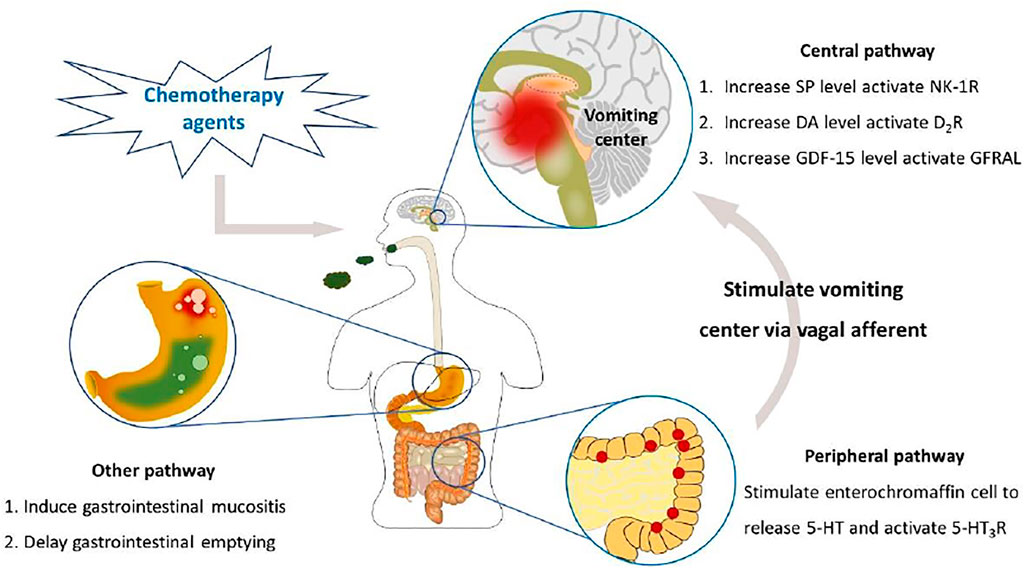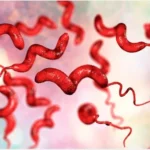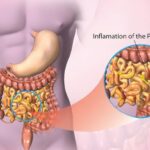Chemotherapy-induced nausea and vomiting (CINV) is one of the most distressing side effects experienced by cancer patients undergoing chemotherapy treatment. These symptoms can significantly affect a patient’s quality of life, leading to dehydration, weight loss, and a reluctance to continue treatment. Understanding the underlying mechanisms, risk factors, and available treatment options is crucial for both patients and healthcare providers in managing these symptoms effectively.

What is Chemotherapy-Induced Nausea and Vomiting?
Chemotherapy-induced nausea and vomiting are the body’s responses to chemotherapy drugs, which often target rapidly dividing cancer cells but also affect healthy cells. These side effects are typically triggered by the toxicity of chemotherapy agents and can occur during or shortly after treatment. Nausea refers to the feeling of unease in the stomach, while vomiting involves the forceful expulsion of stomach contents. Both can be acute or delayed, and their severity can vary depending on the chemotherapy regimen used.
Causes and Mechanisms Behind CINV
CINV occurs as a result of the interaction between chemotherapy drugs and various physiological systems. The primary mechanisms include:
- Chemoreceptor Trigger Zone (CTZ) Activation
The CTZ in the brain is sensitive to toxins and drugs. Chemotherapy drugs stimulate this zone, sending signals to the vomiting center, which results in nausea and vomiting. - Gastrointestinal Tract Irritation
Some chemotherapy drugs can irritate the lining of the stomach and intestines, leading to nausea and vomiting. This response is part of the body’s defense mechanism against harmful substances. - Serotonin Release
Many chemotherapy drugs trigger the release of serotonin in the gastrointestinal system. Serotonin binds to receptors that send signals to the brain, promoting nausea and vomiting. - Neurokinin Receptor Activation
The neurokinin receptors in the brain also play a key role in the nausea-vomiting response. These receptors are activated during chemotherapy, contributing to the overall symptom severity.
Types of Chemotherapy-Induced Nausea and Vomiting
Understanding the types of CINV is essential for effective management. CINV can be classified based on the timing of its onset:
- Acute Nausea and Vomiting
This occurs within the first 24 hours after chemotherapy administration and is often associated with highly emetogenic chemotherapy drugs. It tends to peak within 4–6 hours after treatment and can last for up to 24 hours. - Delayed Nausea and Vomiting
Delayed symptoms emerge after the first 24 hours and can last up to 5 days post-treatment. This type of CINV is common with moderately or low-emetogenic chemotherapy drugs. - Anticipatory Nausea and Vomiting
This occurs before treatment due to past experiences with chemotherapy. Patients who have previously had severe nausea and vomiting may develop conditioned responses to the treatment setting, even before chemotherapy administration.
Risk Factors for CINV
Several factors contribute to a patient’s susceptibility to chemotherapy-induced nausea and vomiting. These risk factors include:
- Chemotherapy Agent: Drugs with high emetogenic potential, such as cisplatin, are more likely to cause severe nausea and vomiting.
- Age: Younger patients, particularly those under 50, are more prone to CINV.
- Gender: Female patients have a higher incidence of CINV than male patients.
- History of Motion Sickness: Patients with a history of motion sickness or morning sickness during pregnancy may be more susceptible to CINV.
- Prior Episodes of Nausea and Vomiting: A history of nausea and vomiting during previous chemotherapy cycles increases the likelihood of recurrence.
- Anxiety and Psychological Factors: Patients with high levels of anxiety may experience more severe nausea and vomiting.
Managing Chemotherapy-Induced Nausea and Vomiting
Effective management of CINV involves a combination of preventive and therapeutic measures. A comprehensive treatment plan tailored to the patient’s specific needs can minimize the severity of symptoms and improve adherence to chemotherapy regimens.
Pharmacological Treatments
- 5-HT3 Receptor Antagonists
Medications such as ondansetron and granisetron block serotonin receptors in the brain and gastrointestinal tract, preventing nausea and vomiting. - NK1 Receptor Antagonists
Aprepitant and fosaprepitant work by blocking neurokinin-1 receptors in the brain, providing additional protection against delayed nausea and vomiting. - Corticosteroids
Dexamethasone, when used in combination with 5-HT3 antagonists, can reduce the incidence of nausea and vomiting, particularly in patients receiving high-dose chemotherapy. - Benzodiazepines
Lorazepam and other benzodiazepines can help manage anticipatory nausea and vomiting by reducing anxiety and providing sedative effects. - Cannabinoids
In certain cases, dronabinol and nabilone, synthetic cannabinoids, can be used to control nausea, especially in patients who have not responded to other treatments. - Anticholinergics
Scopolamine patches can be effective in reducing nausea and vomiting, particularly for patients who experience motion sickness or anticipatory symptoms.
Non-Pharmacological Treatments
- Acupressure
Applying pressure to specific points on the body, such as the P6 point on the wrist, can help alleviate nausea. Some studies suggest that acupressure may be beneficial for certain patients. - Dietary Modifications
Small, frequent meals consisting of bland, non-greasy foods can be easier to tolerate. Avoiding spicy, fatty, or overly sweet foods can reduce nausea. - Hydration
Ensuring adequate fluid intake is crucial to prevent dehydration caused by vomiting. Oral rehydration solutions or intravenous fluids may be necessary for severe cases. - Relaxation Techniques
Mindfulness, meditation, and deep breathing exercises can help reduce anxiety and the severity of anticipatory nausea and vomiting.
Preventing Chemotherapy-Induced Nausea and Vomiting
Prevention is key in managing CINV, and it begins before chemotherapy is administered. Strategies include:
- Pre-treatment Antiemetic Therapy: Administering anti-nausea medications before chemotherapy begins can significantly reduce the risk of CINV.
- Tailored Treatment Plans: Oncologists can select chemotherapy regimens with lower emetogenic potential for patients who are at high risk for CINV.
- Patient Education: Informing patients about the possibility of nausea and vomiting and educating them on coping strategies can help reduce anxiety and improve symptom control.
The Role of Healthcare Providers in Managing CINV
Healthcare providers play a crucial role in managing CINV. They must:
- Assess Risk: Evaluate each patient’s risk factors to tailor prevention and treatment strategies.
- Monitor Symptoms: Track the effectiveness of antiemetic therapies and adjust as needed.
- Supportive Care: Offer psychological and nutritional support to improve overall well-being.

